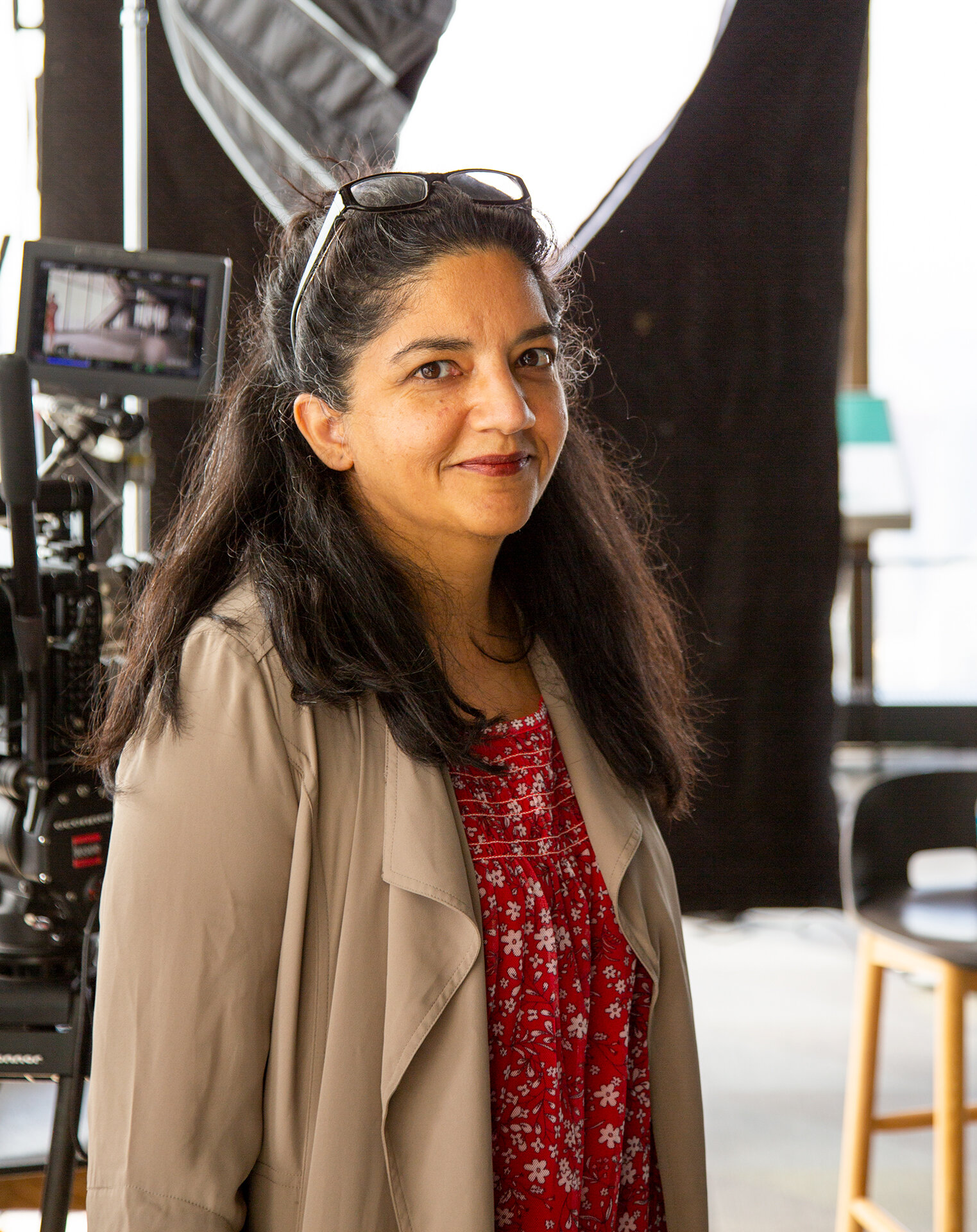Director’s Statement
By Laila Kazmi, Director/Producer/Writer
Laila Kazmi, Director/Producer/Writer
Photo by Ali Kazmi
Arriving in Chicago in 1984 with my parents and siblings, I was amazed by the city’s richness, diversity, and, of course, its world-famous skyline—lined with an impressive mix of art deco and modern skyscrapers. Reaching above them all was the famous Sears Tower (now Willis Tower), the world’s tallest building at the time. Later, the John Hancock Center became one of my favorite spots to take in the magnificent views of the sprawling Chicago city lights.
It was on one of my first sight-seeing visits to the Sears Tower that I learned that the man responsible for designing both of these buildings was the structural engineer Fazlur Rahman Khan. Learning as a teenager and new immigrant to the US that a South Asian, Muslim immigrant like myself designed America’s tallest building left a lasting impression. It also reinforced the idea of America being a ‘land of opportunities.’
A few years ago, after having been a television producer for many years, I began to wonder about Dr Khan’s story. As I dug deep, I was amazed by the impact of his innovations and the legacy that he left behind. I became convinced that his was a story that needed to be shared with a wider audience, beyond the pages of architecture and engineering books.
Director Laila Kazmi at the Ryerson & Burnham Library in Chicago in 2019.
It is essentially an American story, about an immigrant who came to this country with little and, with hard work, reached the heights of his profession. At a time when supertall skyscraper construction was considered cost prohibitive and inefficient, Fazlur R Khan designed a series of structural systems that changed the course of the skyscraper, allowing builders to go higher than ever before possible. Khan, a Muslim immigrant from Bangladesh, is widely considered a pioneer in the development of something that he described as “a distinct contribution of the American heritage,” i.e., the skyscraper.
Khan’s story is inspiring and could open doors for so many, regardless of their background. We hope that this documentary will also help shed light on the long history of Asian immigrants’ contributions to America. Asian Americans have helped build this nation, from building railroads to designing towering skyscrapers. In Fazlur Khan’s story, there are the stories of Hal Iyengar, Joseph Colaco, Chandra Jha, Sarv Nayyar, and Mir M. Ali, all South Asian immigrants, each with significant contributions to shaping the built environment of American cities.
One of Dr. Khan’s oft-cited quotes is from a 1972 interview in the Engineering News-Record magazine, which awarded him ‘Construction Man of the Year.’
“The technical man must not be lost in his own technology. He must be able to appreciate life, and life is art, drama, music, and most importantly, people,” said Khan.
With this documentary, I hope to illuminate Fazlur Rahman Khan's story, his technical genius, his love for people, music and poetry, and how he came to be the man whose innovations laid the groundwork for all modern skyscrapers.
I am excited to embark on this journey of making my first feature-length documentary film and grateful to be joined by an accomplished team. I am further grateful to all those who are supporting us to help bring this project to fruition.
Thank you!
To support our project, donate now. To sponsor or otherwise partner with us on this documentary project, please contact us. We appreciate your support.


